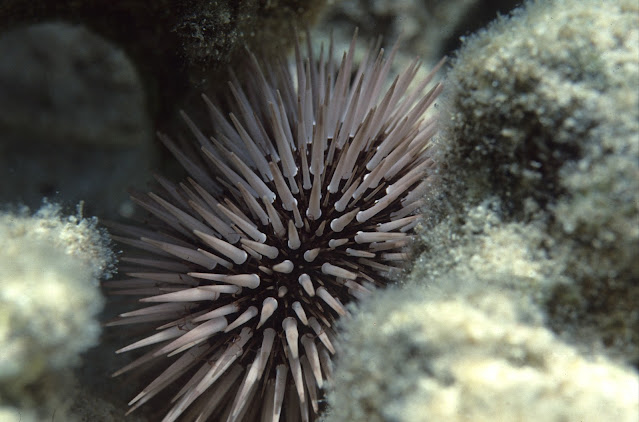The Hidden Wonders of Pygmy Seahorses: A Closer Look at Their Camouflage Abilities
Pygmy seahorses are a fascinating and elusive species that have captured the attention of marine biologists and underwater enthusiasts alike. These tiny creatures, measuring only about 2 centimeters in length, are known for their incredible camouflage abilities and unique characteristics. Studying pygmy seahorses is important not only for understanding their role in marine ecosystems but also for gaining insights into the evolution of camouflage and adaptation strategies in the animal kingdom.
Pygmy Seahorses: The Masters of Camouflage
Camouflage is a common survival strategy used by many animals to blend in with their surroundings and avoid predators. Pygmy seahorses take this strategy to a whole new level with their exceptional ability to mimic their environment. These tiny creatures have specialized skin cells called chromatophores that allow them to change color and texture to match the coral or sea fans they inhabit.
One of the most remarkable examples of pygmy seahorses' camouflage abilities is the Bargibant's pygmy seahorse (Hippocampus bargibanti). This species is found exclusively on specific species of sea fans, where it perfectly blends in with its host. The Bargibant's pygmy seahorse has a body covered in small tubercles that resemble the polyps of the sea fan, making it nearly impossible to spot unless you know what you're looking for.
The Different Species of Pygmy Seahorses and Their Unique Characteristics
There are several species of pygmy seahorses, each with its own unique characteristics and adaptations. The Denise's pygmy seahorse (Hippocampus denise) is known for its vibrant colors, ranging from bright orange to pink or yellow. It is often found on soft corals, where its coloration helps it blend in with the surrounding environment.
Another species, the Pontoh's pygmy seahorse (Hippocampus pontohi), is one of the smallest seahorses in the world, measuring only about 1 centimeter in length. It is often found on algae-covered rocks or coral rubble, where its mottled coloration and bumpy texture help it blend in with its surroundings.
The Evolutionary Advantages of Pygmy Seahorses' Camouflage Abilities
The camouflage abilities of pygmy seahorses have evolved over time to provide them with distinct advantages in their environment. By blending in with their surroundings, they are able to avoid detection by predators and increase their chances of survival. This is especially important for such small creatures that are vulnerable to predation.
In addition to avoiding predators, pygmy seahorses' camouflage abilities also help them capture prey. By disguising themselves as part of the coral or sea fan, they can ambush unsuspecting small crustaceans and other tiny organisms that come within their reach.
The Role of Habitat in Pygmy Seahorses' Camouflage Strategies
The habitat in which pygmy seahorses live plays a crucial role in their camouflage strategies. Different species of pygmy seahorses are found on specific types of coral or sea fans, and their coloration and texture are perfectly adapted to match their chosen habitat.
For example, the Bargibant's pygmy seahorse is found exclusively on specific species of sea fans that have a particular color and texture. The seahorse's ability to mimic the polyps of the sea fan allows it to blend in seamlessly with its environment and avoid detection by predators.
The Science Behind Pygmy Seahorses' Coloration and Texture
The coloration and texture of pygmy seahorses are not just random patterns but rather a result of complex biological processes. The color-changing ability of pygmy seahorses is controlled by specialized cells called chromatophores, which contain pigments that can expand or contract to change the color of the seahorse's skin.
The texture of pygmy seahorses' skin is also an important aspect of their camouflage. The tubercles and bumps on their bodies help them mimic the texture of the coral or sea fan they inhabit, making it even more difficult for predators to spot them.
The Importance of Pygmy Seahorses in Marine Ecosystems
Pygmy seahorses play a vital role in marine ecosystems. They are not only important prey for larger predators but also contribute to the overall health of the ecosystem. As they feed on small crustaceans and other tiny organisms, they help maintain the balance of populations and prevent overgrowth of certain species.
Furthermore, pygmy seahorses are often found on coral reefs, which are among the most diverse and productive ecosystems on Earth. By studying pygmy seahorses, scientists can gain insights into the health and resilience of coral reefs and develop strategies for their conservation.
Threats to Pygmy Seahorses and Conservation Efforts
Despite their small size, pygmy seahorses face numerous threats that put their survival at risk. Habitat destruction, pollution, and overfishing are some of the major threats they face. Additionally, the illegal trade in exotic marine species poses a significant threat to pygmy seahorses, as they are often targeted for aquarium trade.
To protect pygmy seahorses and their habitats, conservation efforts are underway around the world. Marine protected areas have been established to safeguard their habitats, and efforts are being made to raise awareness about the importance of these creatures and the need for their conservation.
The Fascinating World of Pygmy Seahorse Research
Research on pygmy seahorses is ongoing, and scientists continue to make fascinating discoveries about these elusive creatures. Recent studies have focused on their reproductive behavior, genetic diversity, and the impact of climate change on their populations.
One interesting finding is that pygmy seahorses have a unique mating system where the male carries the eggs in a specialized pouch until they hatch. This is in contrast to most other seahorse species, where the female carries the eggs.
Appreciating the Beauty and Complexity of Pygmy Seahorses
In conclusion, pygmy seahorses are truly remarkable creatures that deserve our attention and appreciation. Their incredible camouflage abilities, unique characteristics, and important role in marine ecosystems make them a subject of fascination for scientists and nature enthusiasts alike. By studying and protecting pygmy seahorses, we can gain valuable insights into the evolution of camouflage and adaptation strategies and contribute to the conservation of marine ecosystems.










.jpg)

0 comments:
Post a Comment